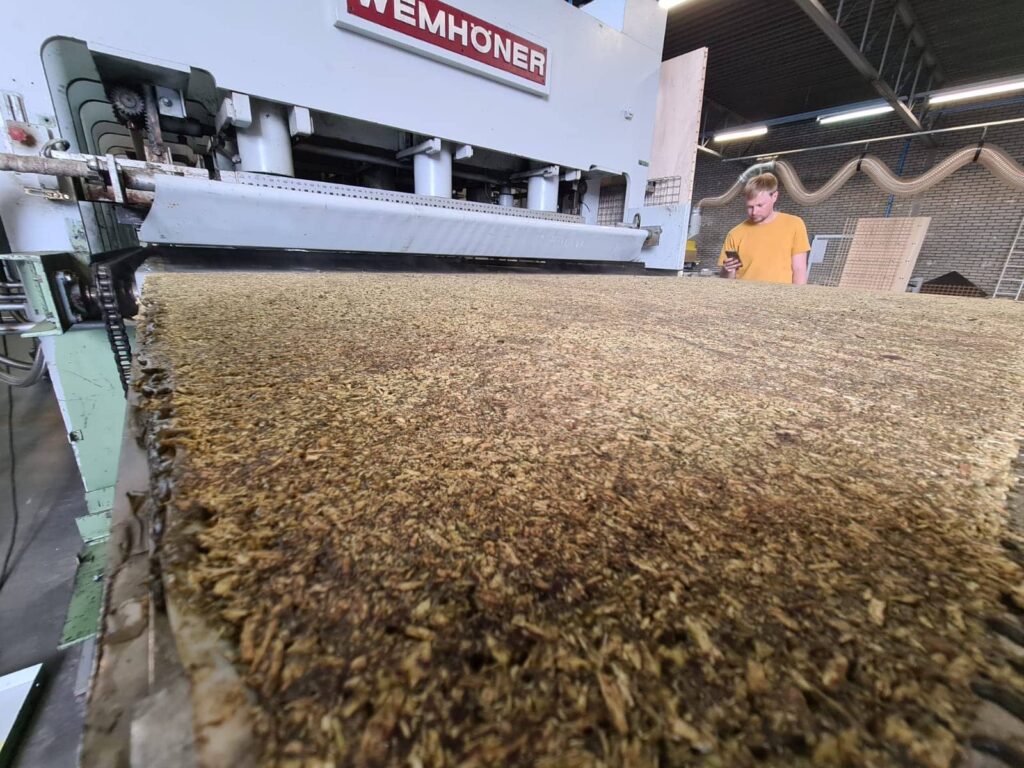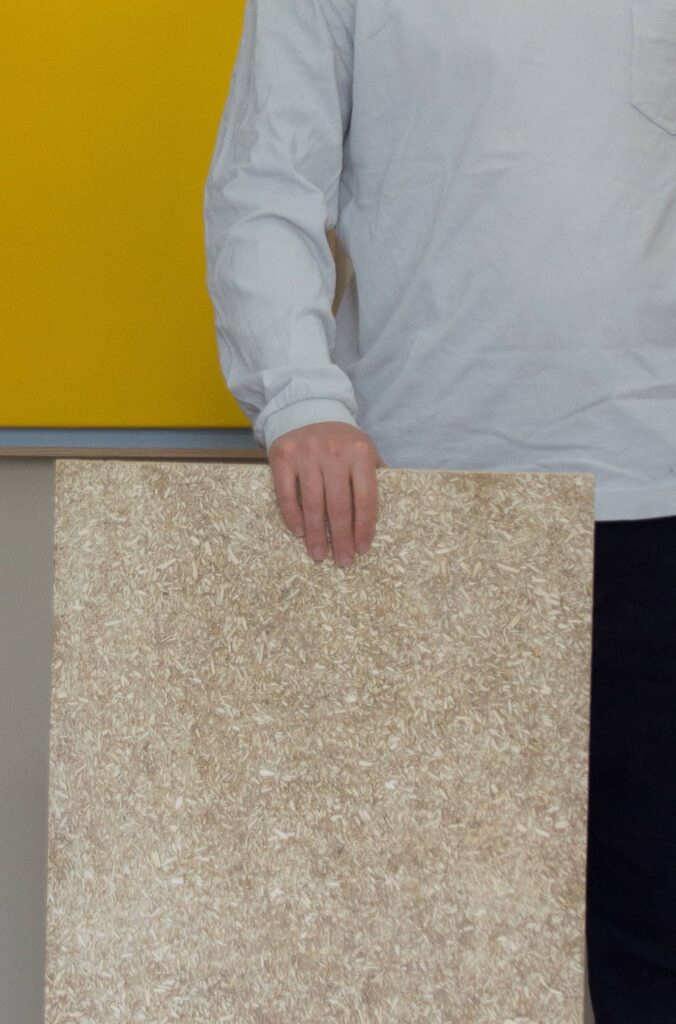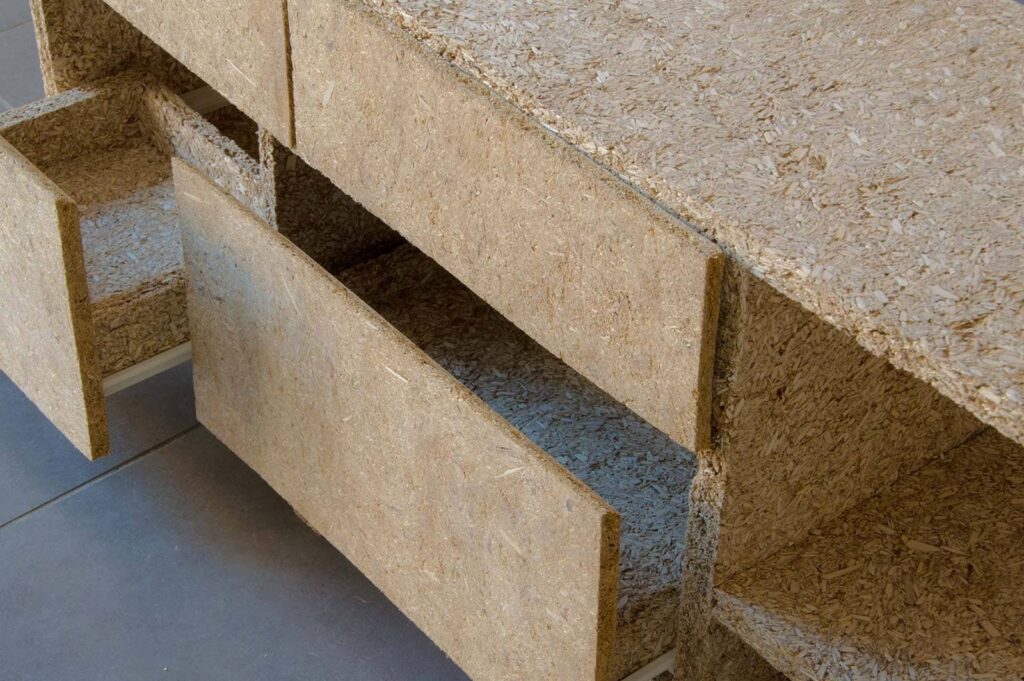Due to the enormous amount of residual flows from the greenhouses, it is possible to convert a large amount into usable building material such as sheet material. With the use of a natural coating, the material becomes water-repellent.
The residual flow that does not end up on your plate can be processed in your kitchen cupboard.
Is made from
- Fibers from North Limburg
- Shredded bell pepper plant
- Starch
Manufacturing process
- The pepper plant grows and is tied up with plastic wire.
- The plant is fully grown in November and is being cleared for a new season
- It is not profitable for the grower of the plant to remove the wire of each plant separately, so it ends up in the waste pile.
- All the material in the greenhouse is shredded and filtered to remove as much plastic as possible from the fiber, so that it can be made into sheet material.
- Then it’s brought to the production facility.
- Then follows the mixing, mixing, pressing and drying, in other words the sheet material production.
- After the material is created, it is processed by means of woodworking machines.

Applied
This material is suitable for interior construction, such as wall finishing. The material can be supplied as a fire-resistant finish. The material is also suitable for furniture.
Environmental impact
- The plant provides fiber, which absorbs CO2 during growth.
- The binder comes from starch, which is refined from the fruit of a plant that grows in the Netherlands.
- When the product/material is no longer desired, it can be taken, shredded and reused to produce new material.
- This product gives a residual flow a destination again.
Good to know!
The material is light and natural, has its own aesthetic and tells something about local agriculture.

Growth opportunities
The intention is that this board is fully compostable, just like ‘Combind Hemp’. For this, a solution will have to be found for the plastic residues that now ends up in the material despite the filtering.
At the moment a small scale-up has started. In which panels of 244 x 122 cm are produced.



